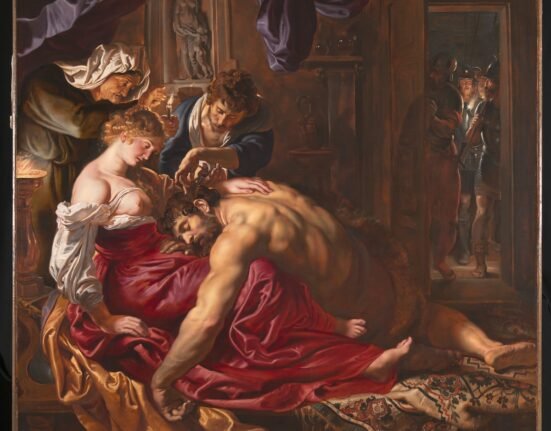Buoyed on by the release of a new movie starring Adrien Body (appropriately called The Brutalist) efforts have been revived to try and get London’s landmark slab of concrete – the Southbank Centre – listed to prevent it from future alterations or even demolition. Elsewhere in the world, Chicago’s edgy 1960s City Hall has just been given the USA equivalent of a listing, offering similar protections.
This burst of publicity for such divisive designs has got people talking about the merits of brutalism again, a subject perhaps more timely than ever for the fast-changing Bradford cityscape.

In Bradford, High Point now looms triumphantly over the city centre – its future fate secured following a sensitive internal renovation to incorporate spacious apartments and supposedly a rooftop terrace. There are hints too at an interesting new use for the ground floor unit, which will eventually be at the heart of a new residential quarter.
It wasn’t always so easy for High Point. After only a couple of decades, its original building society occupants had upped sticks and moved to an out-of-town ‘campus-style’ headquarters, as was the trend in the 1990s. What its new site lacked in character or architectural merit, it made up for in parking spaces to keep people as far away from the city centre as possible.
At one stage, High Point was to suffer the indignity of cladding, although its pre-recession links with the Hilton Hotel chain may have made such treatment a bit more palatable.

In 2019, Bradford Civic Society hosted a public debate about the role of High Point, and other brutalist-type buildings, in what is ostensibly a Victorian city. The reception of such architecture is clearly heavily linked with wider economic fortunes. When such brutal structures lie empty, they look oppressive and unloving.
Yet, like with London’s Barbican and South Bank, when they’re full of Little Waitroses and trendy cafes, they look inviting, interesting, and generally very cool. Would people have been so quick to give Bingley’s former Bradford and Bingley headquarters a good kicking if it had housed an M&S, a boutique cinema, and high quality apartments? That’s aside from the fact that its demise also hastened the removal of hundreds of well-paid jobs from the town centre too.
When such buildings were designed, they were clearly done so on a crest of optimism, as demonstrated by a quick glance through the original architects’ plans.

While many will (perhaps rightly) still bemoan the loss of the city’s Swan Arcade, sketches of its replacement (now known as Arndale House) show Bradford wanting to be a mini Manhattan. Clean skyscrapers, good office jobs, and lavish materials inside and out.
The optimism and ambition was matched at nearby Provincial House, the lavish former Central Library, and the ‘state of the art’ Kirkgate Centre. Although the latter would, arguably, prove to be Bradford’s biggest architectural mishap.
One thing that also links many of these buildings is an element noticeably lacking in almost all current contemporary developments – the presence of art, craft, and civic pride. The buildings were designed to tell a story, to promote cutting edge creative techniques, and to radiate local character based on Bradford’s unique heritage and growth.
Mercifully, many of the friezes and sculptures from various sites were saved from scrap, and will hopefully be enjoyed by Bradfordians again in the not too distant future. You can already see some of them carefully restored and lovingly displayed within Salts Mill – a beautiful marriage of the old and new Bradfords.
I know that a lot of people reading this will hate ‘brutalist’ architecture, or at least be bemused about what its rise in popularity did to the Bradford of old. In all honesty, I’m not besotted myself. I’d take a Wool Exchange over a West Riding House any day, and the flattening of Kirkgate can’t come quick enough for my liking. But, at least such buildings weren’t afraid to stand for something. They were attention-grabbing and they told a story, people actually put thought into how they would be designed and why. Interestingly, Arndale House is the only UK building to have been designed by the same people as Seattle’s world-famous Space Needle. They weren’t thinking about the future of post-industrial Bradford…they were aiming for the moon.
I hope the current public discourse around brutalism and architectural styles ‘of an era’ will help the way our city is planned for the decades to come. We are rightly very focussed on refurbishment and restoration of our Victorian heart now, yet there will soon be a need for new buildings too – notably at City Village, Jacobs Well, and the so-called Southern Gateway. They mustn’t repeat the past mistakes of the 1970s, but they could certainly try and match some of that ambition and confidence.
As one of the City of Culture slogans goes, ‘Be bold, Be bradford.’
* Si Cunningham is chair of Bradford Civic Society.







